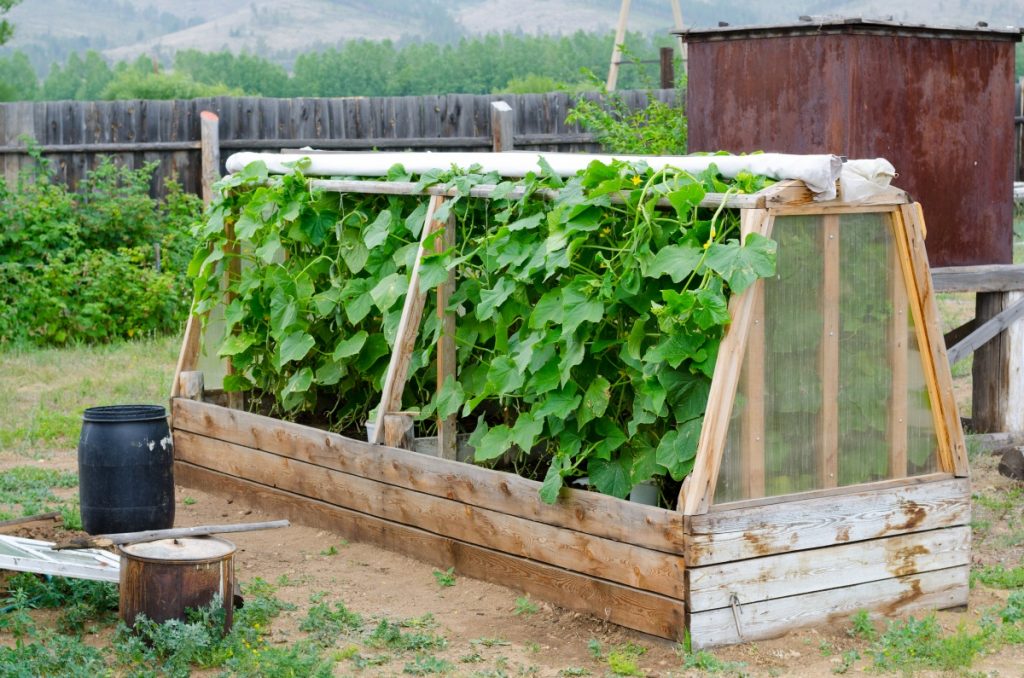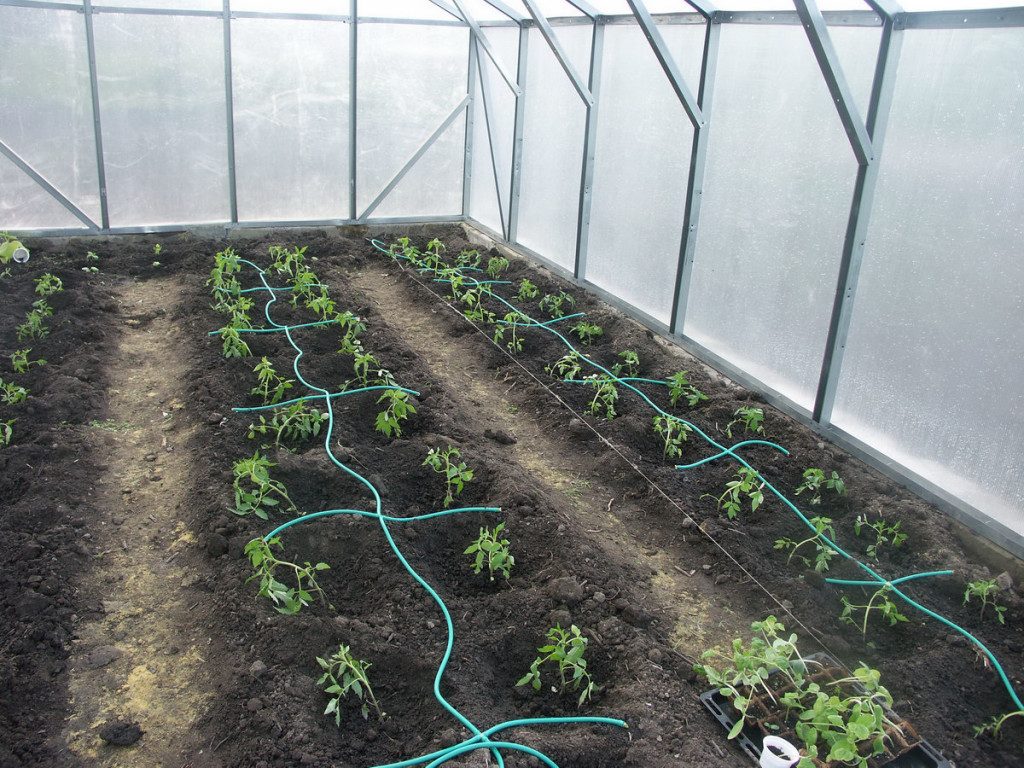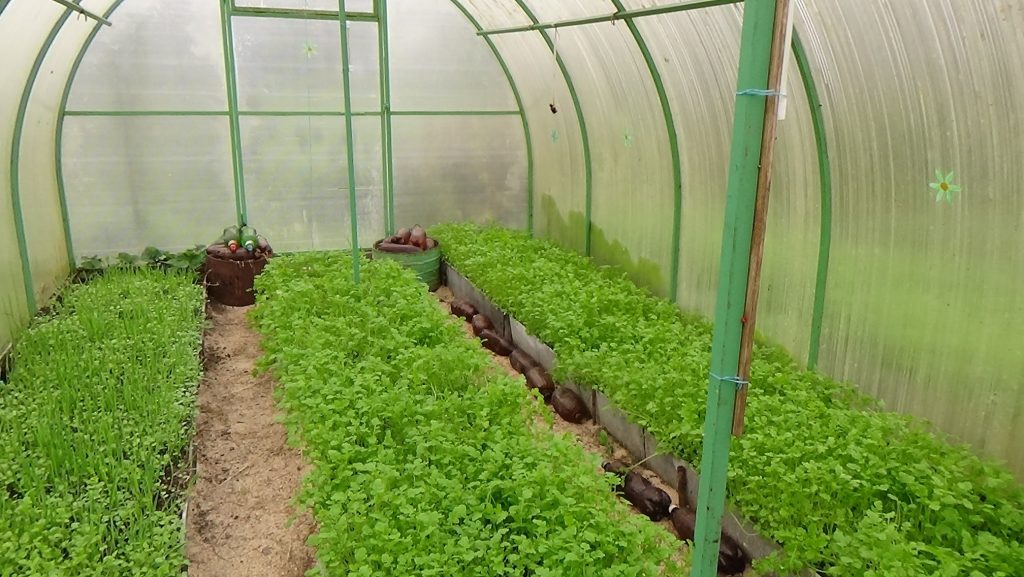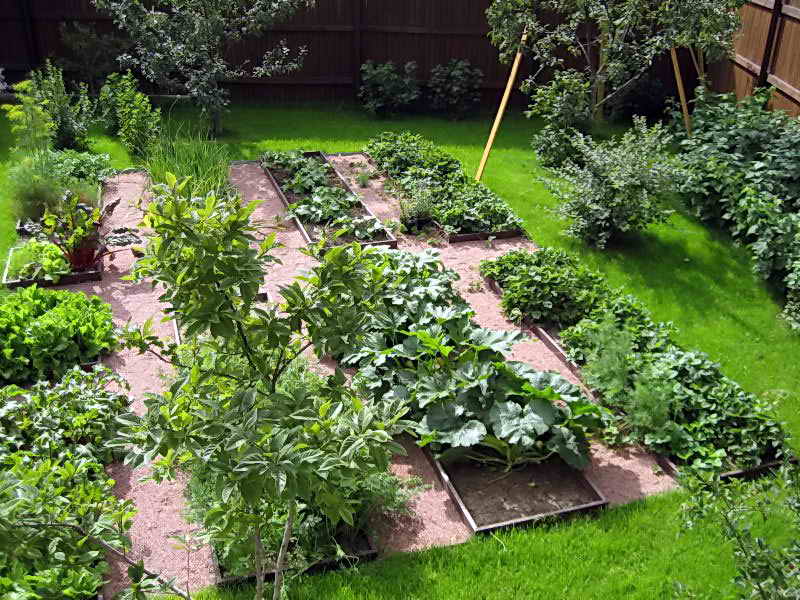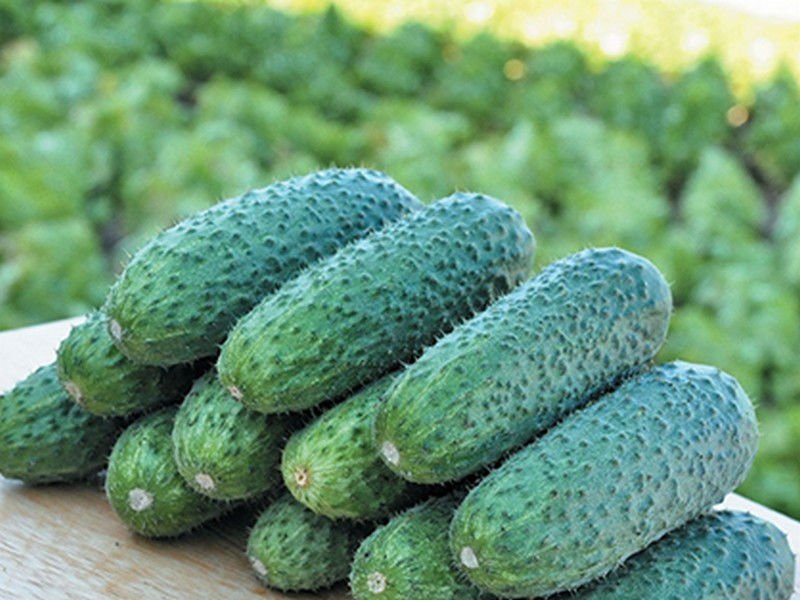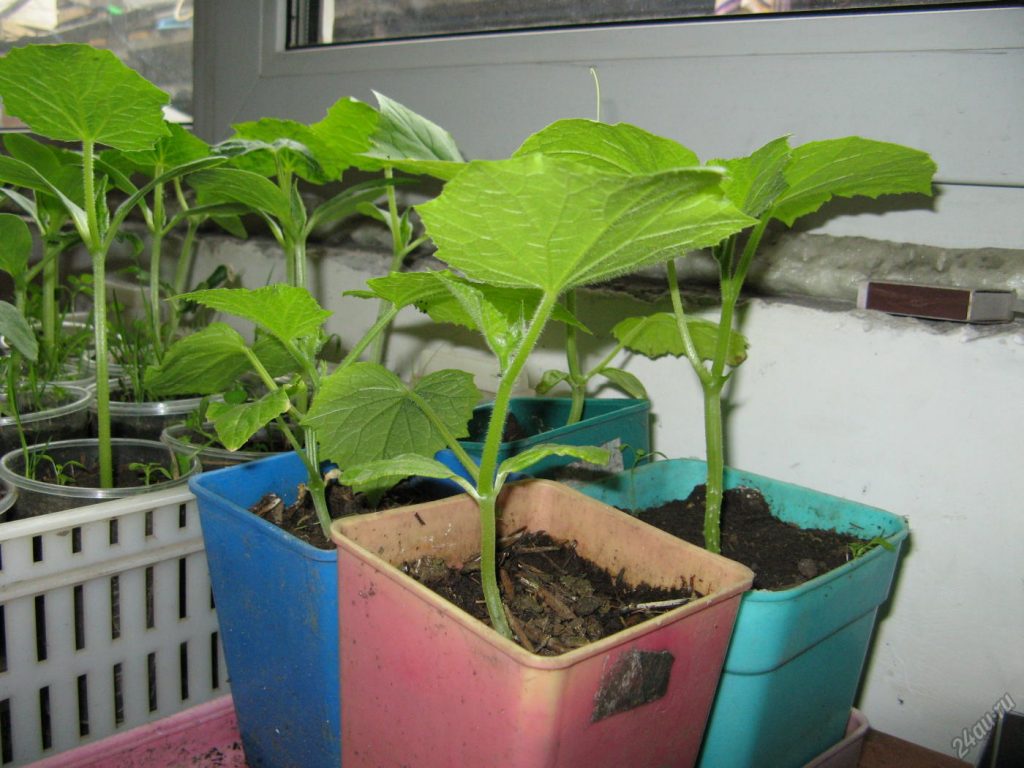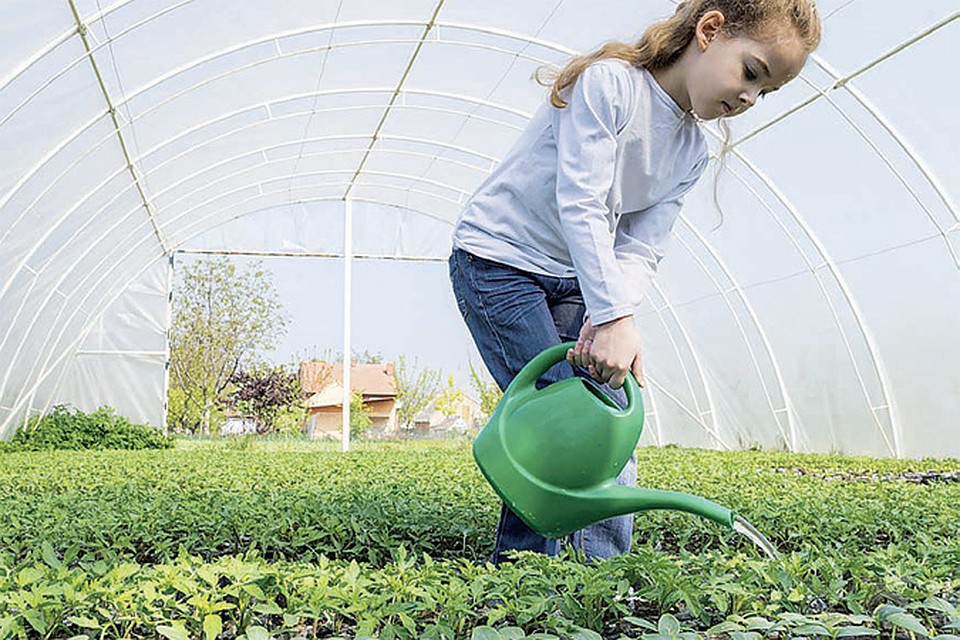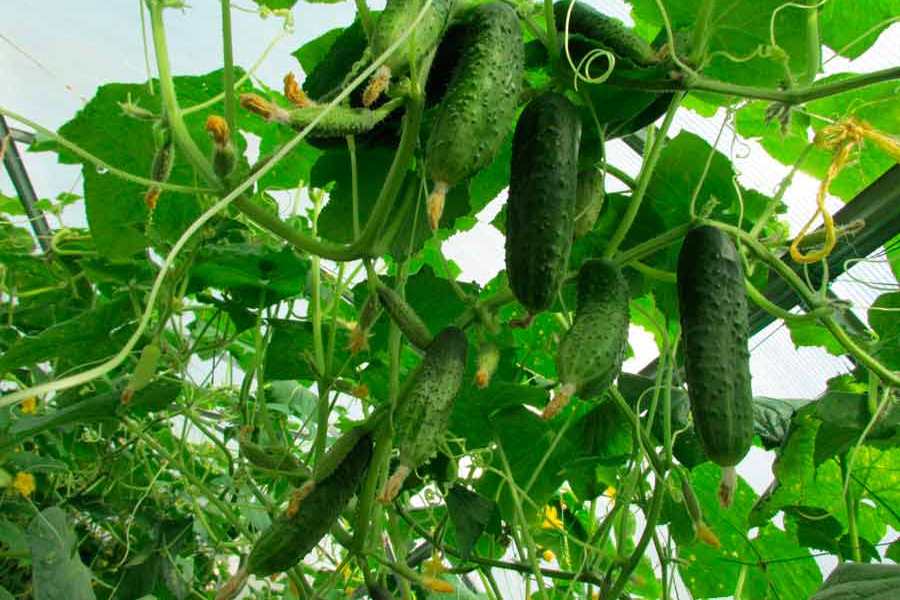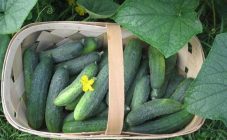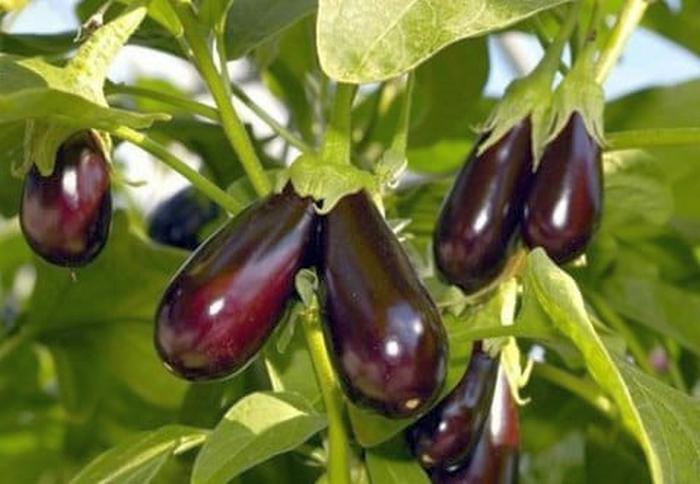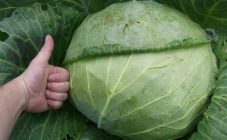Cucumbers are a very demanding crop. If you do not meet the needs of this plant, you can not hope for a large harvest. In addition, they are prone to various diseases, pests love them. So it's not so easy to grow greens. But with proper care, agriculture will bear tasty fruits, will please with its rapid development, high yield rates.
Principles of planting cucumbers
The plant takes root well and bears fruit in sandy loam soil, which is fertilized with organic fertilizing. It will be good to prepare the soil for planting it by mixing it with fresh manure, after which you can plant cucumbers. The optimal proportion would be 10-12 kg per square meter of land.
Mineral fertilizers are also applied carefully. The first top dressing is carried out in early spring, in the first or second decade of March, then fertilizers are applied once a week.
Agriculture loves a lot of sunlight, so it should be planted in well-lit areas, protected from drafts and wind. The cucumber will develop more slowly and form fruit more slowly if the soil is very waterlogged. Watering should be done when the top of the soil is well dried. The water intended for watering the vegetable should be warm.
The culture does not tolerate sudden changes in temperature; it is an extremely heat-loving plant. Therefore, sowing seeds in open ground in central Russia is carried out in the last decade of May, and in the northern part - in early June. If there is still a threat of frost on the soil, it is recommended to cover the places where the seeds are sown with foil or agrofibre. When the threat has passed, the tape should be removed.
It is worth immediately deciding on the method of disembarkation. Seedlings will give the first harvest faster than sown seeds. But the seed planting method will provide a more powerful root system, a more hardened plant, and high resistance to some types of diseases. You can also sow seeds in a greenhouse. This will protect the plant from unexpected frosts.
The root system of the cucumber needs constant air circulation, so the soil needs to be loosened. Loosening of the soil is carried out after each soil moisture. A hard crust should not be allowed to appear on the ground, as the cucumber will develop more slowly.
This crop does not need hilling.
Fertilizers should be applied in moderation. If the fertilizer contains too much nitrogen, the fruits will be nitrate. The plant needs the first feeding two weeks after planting, the second - at the beginning of the formation of fruits, at the end of the formation of the first fruits, you can feed the cucumber again. Calcium nitrate and phosphorus fertilizers are used as fertilizers.
Crop rotation and green manure
Almost every gardener has heard of such a term as crop rotation. It is necessary to give the soil a break from the same fertilizers. Indeed, when planting the same crop in one place for several years, the soil gives off the same nutrients.Accordingly, if you plant another crop in this place next year, the soil will restore the nutrients spent last year.
Siderata improve the organic composition of the soil, prevent weeds from growing on the soil. Loosens the soil at shallow depths. They are applied on the soil exclusively taking into account the crop rotation. If you plant them just like that, it can harm the soil.
Siderata need careful study, some of them are also not planted after other crops. For example, green manure such as mustard should not grow in an area where radish or cabbage of any kind grew last year. Siderates include the following crops:
- mustard,
- rape,
- lupine,
- oats,
- rye, etc.
Some vegetables can also be considered green manures: peas, beans, cabbage, radish, watercress, etc. They are not compatible with each other in terms of crop rotation. That is, if you sow cabbage after rapeseed, it will not bring any benefit to the soil. The soil will continue to release nutrients from the same group. Siderata for fertilizing the soil with nutrients can be compared to compost or manure. They rid the soil of harmful bacteria that provoke diseases, clog weeds. The culture is fed with mineral fertilizers, which are subsequently converted into a form that can be processed by vegetables.
Then plant cucumbers
Planting cucumbers after cucumbers in the same beds is undesirable. Cucumbers can be planted in their original place no earlier than after 3 years, since they take a lot of nutrients from the soil. After them, it is worth planting potatoes or tomatoes, since the growth of these plants requires completely different nutrients, the soil is not depleted. Also, the culture can be alternated with onions or garlic.
In principle, any vegetables can be planted after onions and garlic, just do not allow re-planting of the original crops.
After cucumbers, planting is allowed:
- radish,
- beets,
- cabbage,
- vegetables of the nightshade family,
- beans.
A radish planted between rows of cucumber will provide a larger size of zelents. By the way, the neighborhood with cucumbers is also useful for beans. Legumes are planted around the perimeter of cucumber beds.
It is recommended to alternate carrots with cucumbers, since they have different diseases, cultures are affected by different pests.
Corn goes well with cucumber; it is recommended to plant them nearby. Corn increases the yield of cucumbers by six times, the lifespan of cucumber lashes increases. Corn, in turn, also yields more. Before planting corn, it must be germinated. This is done so that corn stalks overtake cucumber stalks in growth. It will be possible to form a cucumber bush directly on the corn, they do not have to be tied up. Cucumber fruits will hang on corn stalks, this will protect the greens from contact with the ground and rotting.
But the neighborhood of cucumbers and potatoes is contraindicated. These two crops oppress each other, planted side by side will not bring a decent harvest. Also, cucumbers cannot coexist with different aromatic herbs.
They also do not get along with tomatoes, because these two crops have different irrigation systems. Tomatoes have a deep root system, so they need more watering, and cucumbers do not tolerate an excess of moisture. Therefore, it is important to plant these two crops away from each other.
Cucumbers bear fruit best in the area after cabbage. Spinach and lettuce strengthen the roots of the cucumber and keep them from rotting and sore.
For convenience, all information is presented in the table:
| Can be planted after cucumbers | Can be planted up to cucumbers | Neighborhood allowed | |
| Cabbage | + | ||
| Legumes | + | ||
| Tomatoes | + | - | - |
| Potatoes | + | + | |
| Bow | + | ||
| Pepper | + | ||
| Pumpkin | - | - | |
| Watermelon | - | - | |
| Corn | - | + | + |
| Dill | + | + | + |
| Beet | + | + | + |
| Zucchini | - | - | - |
| Radish | + | + | |
| Melon | - | - |
Planting crops next year after cucumbers
The principle of crop rotation is the alternation of tops and roots. That is, in the place where plants with a shallow root system grew, it is necessary to plant crops, the root system of which goes well into the ground. After cucumbers, it is most profitable to plant root crops, and they should be less demanding on the conditions and composition of the soil.
You should also think about what to plant after demanding cucumbers for the next year. Cucumbers are ideal garden precursors for crops such as:
- potatoes,
- carrot,
- beet,
- radish of any kind,
- radish,
- onion and garlic.
You can also plant tomatoes. If you plant any of the legumes after the cucumbers, they will not only bring a good and high-quality harvest, but also nourish the soil for further planting of other plants and vegetables.
There are two ways to enrich the soil:
- Replacing the top layers of soil in the beds;
- Planting on the site of green manure.
The first method involves removing and replacing about 25 cm of the top layer of soil. Then the soil should be disinfected and only then fertilized for the winter.
Following the second method, green manures are planted in the first decade of September. They independently fertilize the soil, disinfect it, restore those vitamins and minerals that the soil has given for the growth of cucumbers. These useful plants are mown in mid-October, but the cut grass is not harvested, but mixed with the dug earth.
Cucumbers are very demanding on the soil on which they grow. They also desperately need comfortable growth conditions. With the right approach to planning crops on the site, knowing after which crops you can plant cucumbers, the farmer can constantly enjoy large and high-quality harvests that can be used in preservation for the winter, preparing salads, etc. Also, with timely planning, you do not have to think about what to plant after cucumbers next year, so as not to deplete the soil even more.
